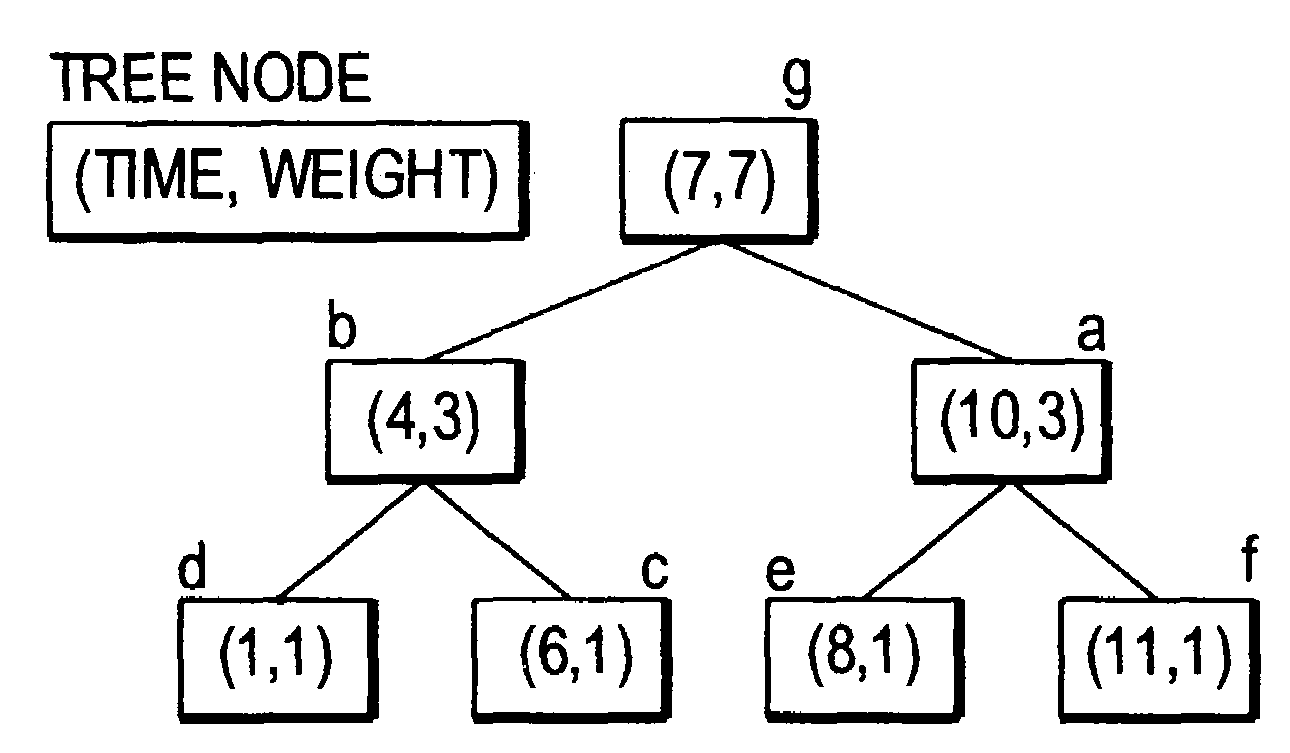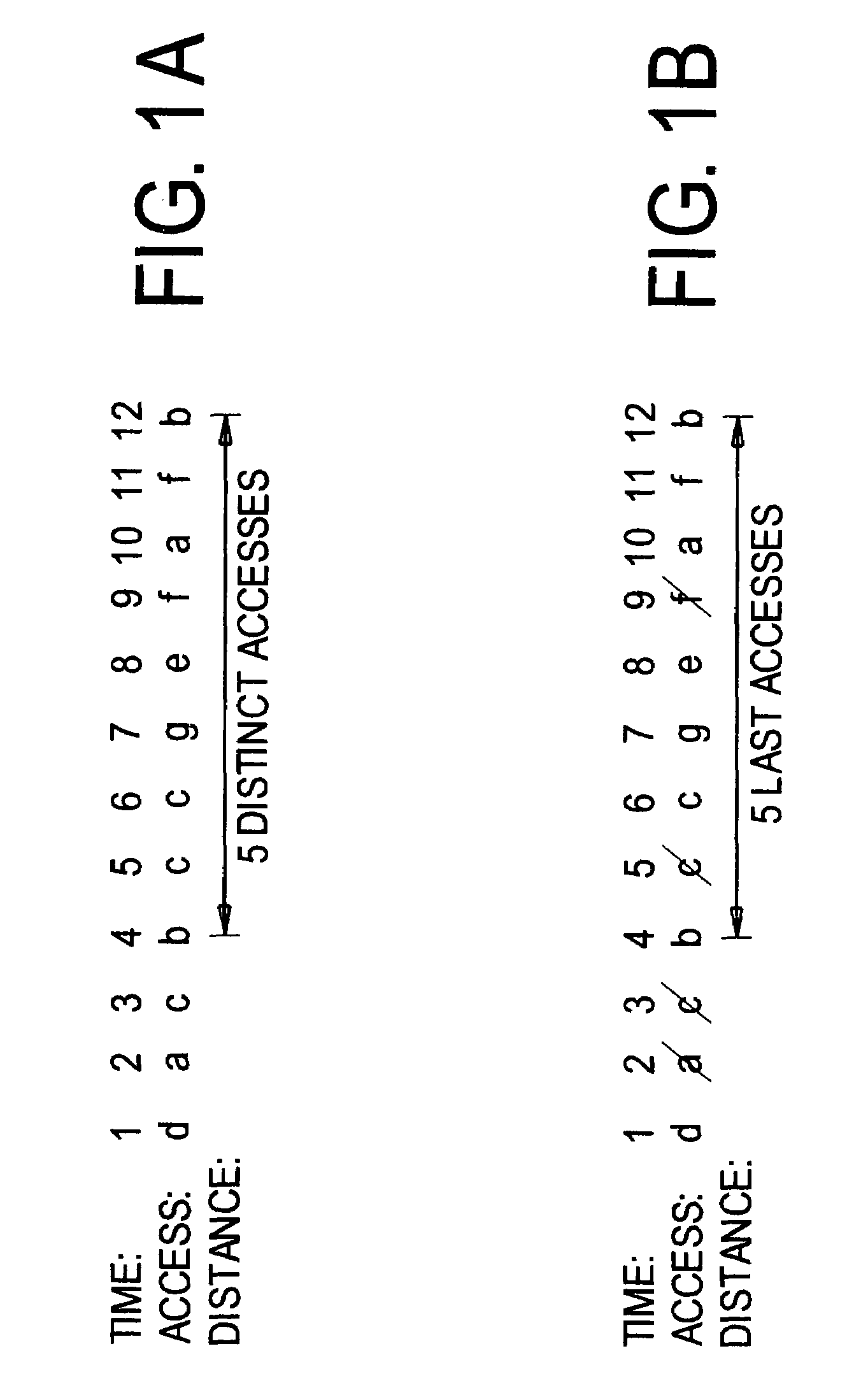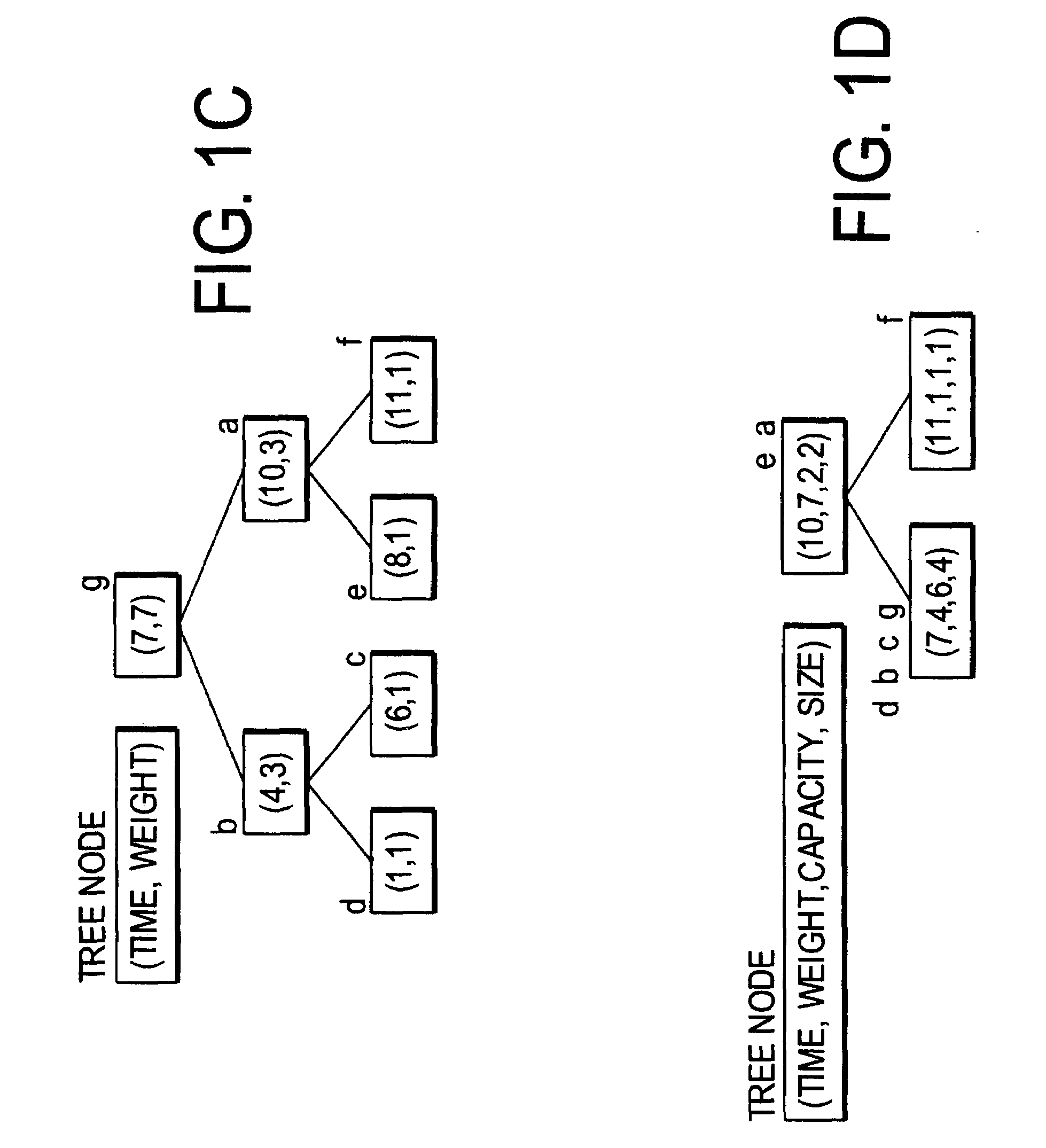Temporal affinity analysis using reuse signatures
- Summary
- Abstract
- Description
- Claims
- Application Information
AI Technical Summary
Benefits of technology
Problems solved by technology
Method used
Image
Examples
Embodiment Construction
[0029]A preferred embodiment of the invention and uses thereof will now be set forth in detail with reference to the drawings.
[0030]Approximate Reuse Distance Analysis
[0031]In a distance analysis, program execution is viewed as a sequence of accesses to data. Measuring reuse distance between two data accesses means counting the number of distinct data between them. In the worst case, the measurement needs to examine all preceding accesses for each access in the trace. So a naive algorithm would need O (N2) time and O (N) space for a trace of length N. This cost is impractical for real programs, which have up to hundreds of billions of memory accesses.
[0032]The time and space costs can be improved, as shown by the example in FIGS. 1A-1D. FIG. 1A shows that it is necessary to count accesses to distinct data. As shown, the reuse distance between two b's is 5. FIG. 1B shows that instead of storing the whole trace, one can store (and count) just the last access of each datum.
[0033]FIG. 1...
PUM
 Login to View More
Login to View More Abstract
Description
Claims
Application Information
 Login to View More
Login to View More - R&D
- Intellectual Property
- Life Sciences
- Materials
- Tech Scout
- Unparalleled Data Quality
- Higher Quality Content
- 60% Fewer Hallucinations
Browse by: Latest US Patents, China's latest patents, Technical Efficacy Thesaurus, Application Domain, Technology Topic, Popular Technical Reports.
© 2025 PatSnap. All rights reserved.Legal|Privacy policy|Modern Slavery Act Transparency Statement|Sitemap|About US| Contact US: help@patsnap.com



